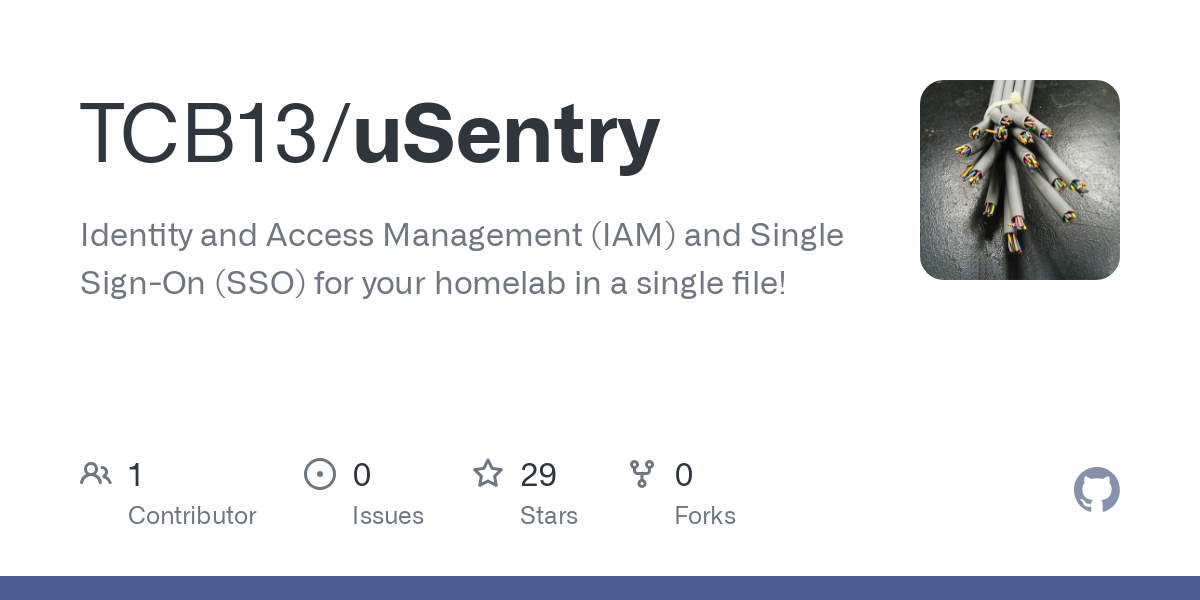- cross-posted to:
- [email protected]
- cross-posted to:
- [email protected]
uSentry is a lightweight, self-hosted Identity and Access Management (IAM) and Single Sign-On (SSO) solution designed for homelab and small-scale environments.
⚡ A single PHP file. < 400 lines of code. No database. No background processes. No cloud. Just works. ⚡
Most IAM and SSO solutions require databases, certificates and background services baked into a dozen containers. This is all fine but also also overkill for homelabs and impossible for low-power ARM devices. uSentry is different, it isn’t pretty but it sucks less for a lot of use cases.
Enjoy!



I feel like committing secrets to a config file instead of .env is a terrible idea. Thats being said this is really useful I’m sure.
I get the point, but don’t forget those “secrets” are bcrypt hashes. Not really reversible.
The issue isn’t that. The issue is its a config
folderfile and a lot of people back their configs up to things like github.@[email protected] latest code pushed into the repo splits the config into it’s own file.
You can backup the entire file then. I get your point, but it also seems like you’re referring to some container-based approach where you would place this inside a container and then mount the config file to some path. While some people might like that approach, that kind of goes against the original idea here, I didn’t want to run yet another instance of nginx for auth, nor another php-fpm - the ideia was simply to use this on a low power device , no containers, no overhead of duplicate webservers and PHP, just a single nginx running a couple of apps on the same php-fpm alongside this.
I think youre misunderstanding my point but thats okay. Its not for me but as a thing itself its really impressive and you should be proud to have written it. I’m sure others will find great use in it :)
I can split the config to another file, not really a big deal. :)
The entire point of
.envfiles are to separate secrets from code. Its specifically the usage for which they were created.Yes?
Are we misunderstanding each other?
We are. I read
I feel like committing secrets to a config file instead of .env is a terrible idea.asI feel like committing secrets to a .env is a terrible idea..Muh bad.
All good brother :)